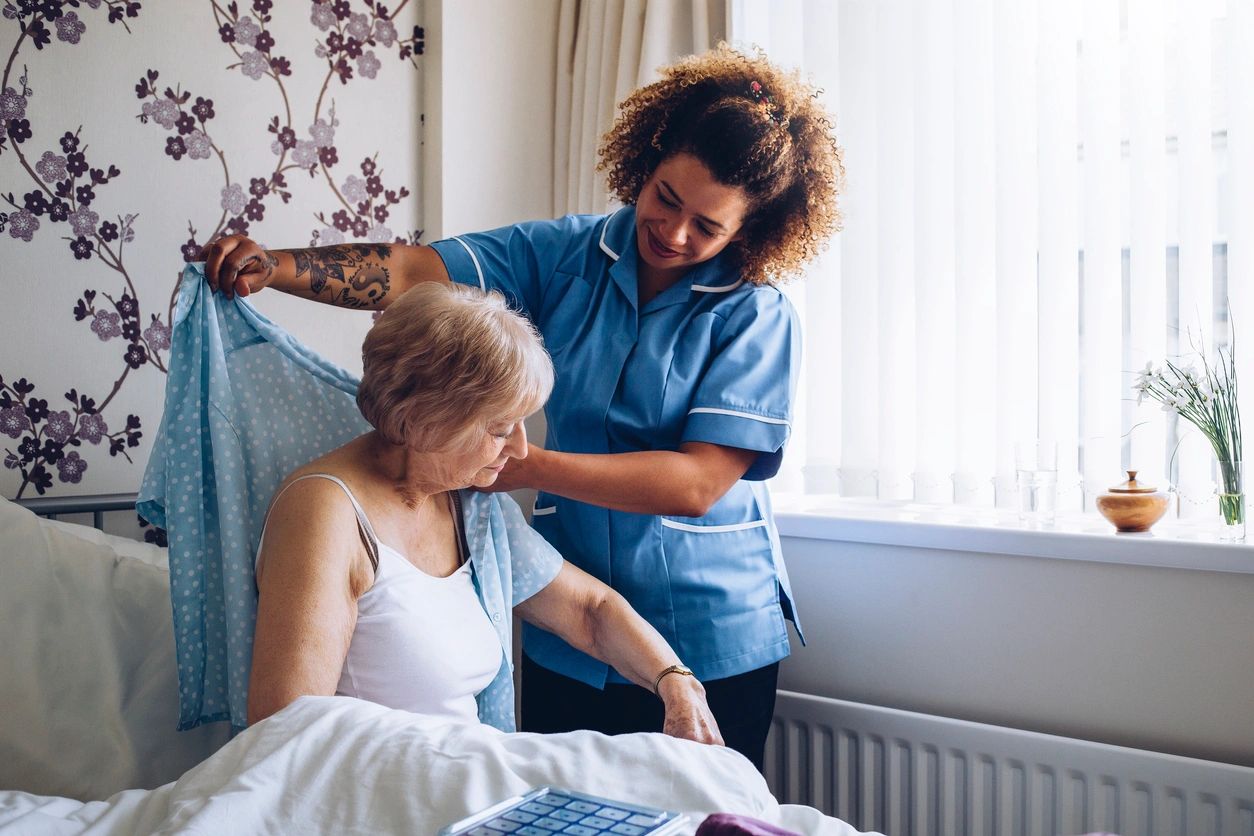Outsiders often perceive a patients careless or sloppy dressing as showing a lack of interest, when it actually may just be the inability to cope with buttons, zippers, snaps or jewelry. All of those items require considerable finger dexterity.
The patient needs support in feeling a sense of control.
How to help: Choose clothing for:
- Ease. The item can be put on or taken off easily.
- Comfort. The item does not restrict movement.
- Recognizability. Try to find items that a person can easily recognize. The same outfit can be purchased again and again; if it wears out you know it’s a favorite.
- Familiarity. Do not introduce new styles – keep the same familiar look.
- Color. Choose colors you know they would have chosen for themselves.\
Touch. Purchase textures when you can. Velvet and silks are enjoyable to touch
Here are some clothing choices that have proven useful:
- Simple, comfortable socks and shoes
- Slip-on or Velcro-tabbed sneakers or shoes
- Ankle-high socks that are all the same color or type
- Knee-high stockings for women
- Open-collar shirts and dresses
- Clothes that are one size larger
- Shirts and dresses that pull on over the head
- Elastic-waist pants that are loose fitting
- Avoid clothing with zippers or buttons. Also, those that are too tight or restrictive
- Never act as if you’re in a hurry if you need to assist a patient with dressing










